Link
Earlychildhood NEWS is the online resource for teachers and parents of young children, infants to age 8. You will find articles about developmentally appropriate practice, child health, safety and behavior as well as links to teacher resources and networking opportunities.
Read this article about introducing wordless picture books into a classroom. Although there were some struggles reported by the teachers who implemented these, the overall outcome was positive and the students gained a lot of their own critical thinking skills
1 note
·
View note
Link
Read here about this fun and motivating team-building activity for your classroom or office. It encourages a group of people to work together and learn more about each other, themselves, and their strengths and weaknesses!
1 note
·
View note
Photo
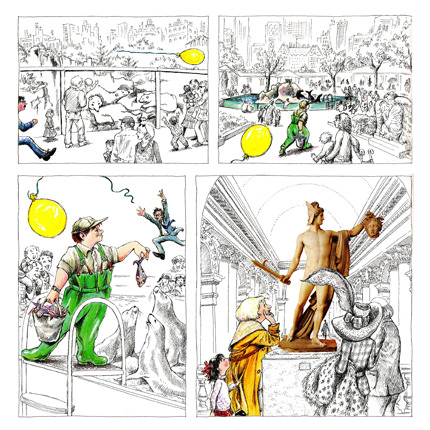
Another excerpt from “You Can’t Take a Balloon Into the Metropolitan Museum is shown here. You can see very obviously that in each box/image there are certain characters/important features that are highlighted in color, while the rest of the image is shown in black and white. This is a style used by the authors which denotes attention to these specific assets in the story. The balloon is one of the aspects of the images that maintains it’s yellow color on every page. It is meant to catch the eye of the reader and show the focus on it. When the little girl and her grandma are shown in the museum, they are also always pictured in color, and sometimes along with a sculpture or piece of artwork like shown above. This type of selective coloring is another important and value part of wordless picture books. Illustrators and authors of wordless picture books often use this type of shading and coloring to their advantage. Most likely, the reader will be drawn immediately to the colored image and often ignore or skim over the rest of the black and white image. It is this selective strategy that can be directly related and assimilated to fit into reading real words in books. The strategy of looking for key words is just like looking for highlighted or colorful pictures. It can help to know that you don’t necessarily need to look at everything, or read every single word in detail to understand a story.
2 notes
·
View notes
Photo

Tuesday is another wordless picture book by David Wiesner. I this book there is a suspicious thing happening in a town where animals have taken flight. There are detailed pictures of frogs flying throughout a neighborhood and what the town things of this mysterious occurrence. Open it up for an imaginative and creative story about 24 hours of a tuesday evening.
4 notes
·
View notes
Photo








On July 20, 1969, humans first landed on the moon, but our favorite moon (book) came out 22 years earlier, in 1947. Here, a look inside this first edition of Goodnight Moon by Margaret Wise Brown, published by Harper & Row.
97 notes
·
View notes
Text
As instructed for this weeks task I popped #picturebooks into the search menu and loads of picture books and related blogs came up. The book ‘Goodnight Moon’ by Margaret Wise Brown caught my eye which had been posted on the Harper Collins Tumblr Blog. I reblogged it (see next blog post on my Tumblr) as it allows you to click through each page of the book. Its also linked to a great bookstore so I figured there would no doubt be other great picture books on this site.
I had this book as a child so it did bring back memories. Over the years I've also borrowed it for my four children from the library. It’s a book more suitable for younger years. I plan to have a look for another book I feel would be more suitable for the middle years and will post that up on a second post.
It could be used in the early years' classroom for a variety of learning opportunities. There are a lot of rhyming words throughout the book. You could also introduce a few poetry conventions demonstrating a few examples through the storybook. I also see maths prompt opportunities where students could count things in the book adding the cross-curricular ideas to a literacy or maths lesson.
There are even a few inspiring links to get creative and incorporate art, music, drama or music from this story. Kids would love it!

Prompt 8 2018
ECL310 Prompt 8 2018
Research a #hashtag
Your task for this prompt is to do a search, on TUMBLR, of #picturebooks.
Type in #picturebooks to the search panel, and browse the numerous TUMBLR posts that are shown.
We want you to find something and share!. You may find the details of a new picture book being released, you may find a discussion or information regarding an obscure, or famous picture book. If you see an interesting hashtag in one of the posts you may like to follow that.
We ask you to reflect and report back on what you have found interesting when you have research #picturebooks. You may choose to follow some TUMBLR sites and recommend these to others. Remember to hashtag #ecl310deakin and #picturebooks

Good luck!
431 notes
·
View notes
Link
This really is a great educational resource website for both teachers and students. It features a great variety of ABC educational resources and supports the teaching of English (including all other subject areas) to both primary and secondary students as part of the Australian Curriculum.
Resources include:
Videos
Digi books
Games
Audio
Links
Teacher resources and notes
I decided to check out the topic: Discussing and Evaluating texts. Found in the link below:
education.abc.net.au/home#!/topic/494720/discussing-and-evaluating-texts.
From this area, I found a resource called the ‘Riddle of the Black Panther: The Search’, found via the following link http://education.abc.net.au/home#!/media/31473/riddle-of-the-black-panther-the-search
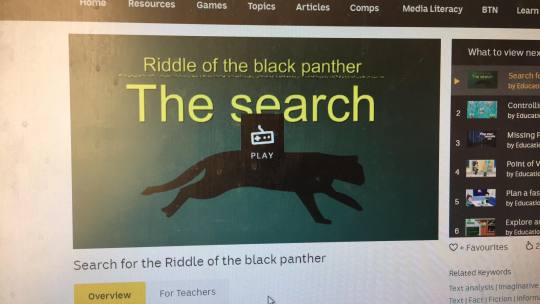
This is a fun middle years English/Literacy based online game (aimed for grades 4,5,6) where you track down a black panther reported to be prowling around a town. In the game, players are required to interview witnesses and gather information from sources such as a website, an advertisement and a newspaper article.
It's a great activity to demonstrate and teach students about interpreting, analysing, evaluating information which they are reading or hear, and shows that they need to be wary: some of the statements may be wrong and the opinions biased. Students are required to select the evidence most likely to be accurate. They can rate the reliability of source and content by using the SAFE test (Source, Attitude, Facts, and Emotions). The end aim of the game is to identify when, where and how to find the panther.
This is a great resource for incorporating a multimodal approach to learning. Students are given the opportunity to use interactive IT styled learning, research and critical thinking skills; reading, analysing and evaluating information.
Limitations of the resource are:
Must have access to a device which can link to the internet and have suitable software and internet speed.
Some students may need extra assistance/enabling prompts to enable them to effectively use the game
It links directly to the following Australian Curriculum codes:
Code: ACELY1701
Learning Area: English
Strand: Literacy
Substrand: Interpreting, analysing, evaluating
Year Level: 5
Description: Identify and explain characteristic text structures and language features used in imaginative, informative and persuasive texts to meet the purpose of the text
Code: ACELY1703
Learning Area: English
Strand: Literacy
Substrand: Interpreting, analysing, evaluating
Year Level: 5
Description: Use comprehension strategies to analyse information, integrating and linking ideas from a variety of print and digital sources
Code: ACELA1501
Learning Area: English
Strand: Language
Substrand: Language for interaction
Year Level: 5
Description: Understand that patterns of language interaction vary across social contexts and types of texts and that they help to signal social roles and relationships
Code: ACELA1502
Learning Area: English
Strand: Language
Substrand: Language for interaction
Year Level: 5
Description: Understand how to move beyond making bare assertions and take account of differing perspectives and points of view
(https://www.australiancurriculum.edu.au)
Prompt 7 2018
I would like you all to have a look at the fantastic teacher materials on this website.
For this weeks reflection, I would like you to browse the many grade 5 and 6 videos and materials available. CLICK into Resources, check the grade 5 and 6 boxes as well as the ENGLISH box.
You may or may not be able to match these resources to your particular AT2 book, either way, it is worthwhile knowing that the ABC always provide teachers with classroom worthy materials.
Your task is to critique one of the 5 / 6 English resources and critique it as if you are reporting back to fellow teachers in a planning meeting or a staff meeting. This may be a video or audio record, handwritten notes, formal notes, a mind-map or a similar cognitive organiser - be creative and we will be looking forward to hearing what you have to say!
good luck
The ECL310 team
199 notes
·
View notes
Link


PROMPT 6 2018
THE PHONICS DEBATE
The link above contains a video recording of a phonics debate provided here through the Australian College of Educators.
Your task is to watch and listen to some of this recorded debate.
You begin by forwarding the video to the 20-minute mark. Beginning around the twenty-minute mark you will see one speaker for the teaching of phonics, followed by a speaker who questions the positioning of phonics in the teaching of reading. The two speakers run from the twenty-minute mark until the 37 and a half minute mark.
Watch both speakers and take notes. After watching from the 20.00 to the 37.30 minutes mark, and having taken your notes, we ask you to complete a RAN chart to help organize your thinking. It is probably easier of you make your own RAN chart.
You may well be asked about Phonics at a job interview so it is worth starting to know more about this topic, now!

219 notes
·
View notes
Photo
Hope you all had a great time on third-year rounds!
Five questions which I could ask Grade 6 students in relation to the cover of the book Dust, could be:
1. When you look at the cover how does it make you feel? happy, sad, worried, concerned, alone? How would you describe the feeling evoked by the colours, wording and overall images on the front cover?
2. Why do you think it says ‘save the children’ on the cover?
3. Why do you think the author has added two children's hands reaching out from the dry, cracked, hard ground?
4. Why do you think this book is titled ‘Dust’? When you think of Dust what does it describe or mean?
5. What does the stark landscape with the central dead tree below the earth symbolise? Once again how does it make you feel?
Could provide some front-loading activities prior to showing the book which would give you an idea of what the children already know about Africa and the hunger issues. With parents consent, you could allow students to watch a few age-appropriate videos on Africa and the issues arising over there? There are also several websites which provide useful info and resources which could assist students to understand the path you're going on with the book and gets them thinking critically.
African music could be playing in the background or African children talking to stimulate the scene. You could also have a picture of where Africa is and the types of landscapes surrounding villages where people live. The types of food they eat and amount of food and water they have access to each day, etc.
This would probably be best done via powerpoint presentation or with an interactive whiteboard. The visual part of the book (illustrations) is obviously a big component to evoke the feelings surrounding this issue.
Another idea is to facilitate a school run 40-hour famine program. Obviously, this requires careful planning and permission from parents and guardians. But is an effective way to demonstrate how difficult it would be for these children. Incorporating humanities into literacy subjects is a great opportunity to teach our students holistic viewpoints and address a selection of cross-curricular priorities.
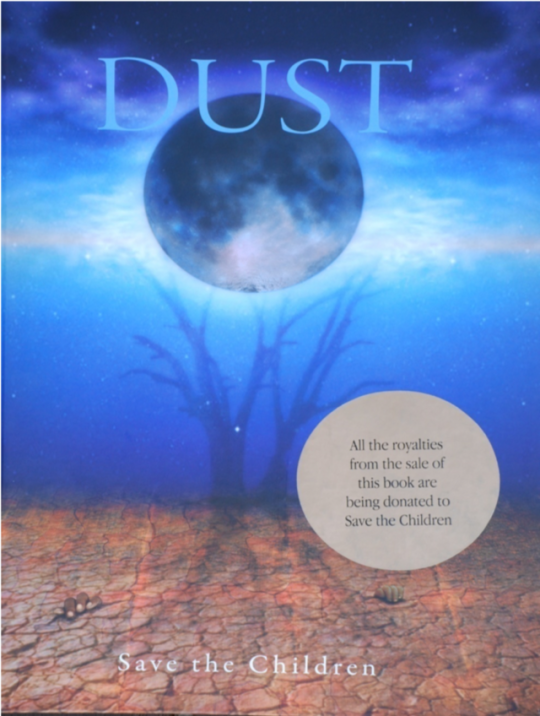
PROMPT 5 ECL310 2018
I hope that you have enjoyed placement and are back on board ready to work through until the end of the trimester.
In seminars this week we have looked at Before Reading, Frontloading, and Predicting. In the week 6 seminar Powerpoint, there are excellent activities based around Way Home by Libby Hathorn. I would encourage you to read the prediction and questioning strategies demonstrated in those slides, to help you to come up with 5 questions that you would ask grade 6 children, directly addressing the front cover of DUST. You can use ideas that were explored in the week 6 seminar.
Your challenge is to present these five questions in a multi-modal format, we encourage you to be creative here, how can you ask these questions in an engaging manner?
Good Luck
#inference
187 notes
·
View notes
Text
I’ve already completed my 3rd year placement so haven’t been on teaching rounds the last few weeks like most of you. I do however work in a school and assist with the Literacy block in my daughters Grade 3/4 class every Monday. I’ll discuss how literacy is run in this particular classroom.
Groups are split into ability levels and teacher provides differentiation opportunities appropriate for each ability level. There are five groups. Marsden, Jennings, Base, Gleitzman and Griffiths (clearly popular authors surnames).
Literacy block is run every morning for one hour. Students split into their allocated groups. Students generally start day with approximately 15 minutes of quiet reading first thing in morning and they also do 15 minutes quiet reading straight after lunch.
I’ve observed a few popular authors of books students are reading in the the classroom at the moment are; David Walliums, Geronimo Stilton, Roald Dahl, Enid Blyton, Andy Griffiths, James Patterson, just to name a few.
Library is every Monday. Students pick up to five of their own books which they can take home or read in class during quiet reading.
Each student has a home reader which they take home and are encouraged to read a bit every day with their family. More intensive reader work done with lower reading group by teacher aide at school.
I’ll try get some pics this week and post up of anything literacy related in this classroom.
Prompt 4 2018

PLACEMENT REFLECTION
Now it is time to reflect on placement and the literacy happening in the room you were in.
If you were not on placement recently you must write about a good, and not so good, literacy experience you have had in a classroom.
Those who were on placement have the same task, tell us what you liked and what you did not like when you were on placement and try and discuss reading and writing at least once.
It would be wonderful if you could include an image of something you saw during placement, but we understand that many of you will be reading this after placement, see how you go. A photo of the school would also be very interesting to your assessor, PLEASE DO NOT include the images of children and their faces.
And it would also be great for you to share what the kids were reading, what are the popular classroom novels in our schools.
From all of us, we do hope you had a rewarding and challenging round and hope you are more determined than ever before to complete your studies and become a great teacher.
Regards from the ECL310 team!
#teachingrounds
214 notes
·
View notes
Photo
Prompt 3 2018- Handwriting

Heres a link about handwriting skills
Raising Children Network
http://raisingchildren.net.au/articles/handwriting.html
Victorian Department of Education
https://www.education.vic.gov.au/school/teachers/teachingresources/discipline/english/literacy/writing/Pages/litfocushandwriting.aspx


PROMPT 3 2018
This week we would like you to reflect on the current state of handwriting in schools today. It might be asked of you in a in a job interview; ‘will you teach handwriting in your classroom?’ Or, ‘how often will you practice handwriting with your students?’
Have you heard teachers on placement discussing handwriting, are you aware of parent opinions, do you have you strong thoughts of your own? We would to read your thoughts, actually we would like to read your handwritten thoughts. That’s right, please submit this reflection, in your own handwriting.
#handwriting #ecl310deakin
151 notes
·
View notes
Link
0 notes
Link
0 notes
Photo
This is just an example of some of the resources already available to purchase for your classroom to add visual strategies in your classroom relating to reading. Link to view or purchase original posters https://www.tes.com/teaching-resource/reading-strategies-posters-11259015
Another useful resource with loads of important information is the DEET Website. Here is a link to the department of education and Training ‘Concepts of Print’
https://www.education.vic.gov.au/school/teachers/teachingresources/discipline/english/literacy/readingviewing/Pages/litfocusconceptsprint.aspx
and ‘the four resources model for reading and viewing’
https://www.education.vic.gov.au/school/teachers/teachingresources/discipline/english/literacy/readingviewing/Pages/fourres.aspx

1 note
·
View note
Text
Prompt Two
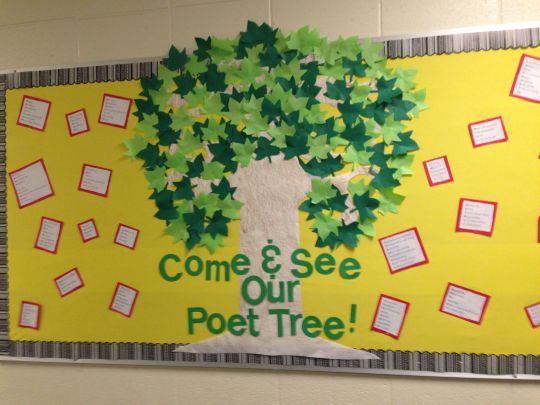
Whilst on teaching placement in a grade 3/4 class I was given the opportunity to create a Poetry unit. Part of this was creating a classroom display for students poems and I came across the idea of creating a Poet Tree Display. Below are a few examples of other peoples displays. When I get a chance I will try to find a photo of my own display I created with students. As we learned about each type of Poem students were able to read a variety of Poems aloud to the class and additionally write their own. They then chose which of their poems they would like to display on our Poet Tree.
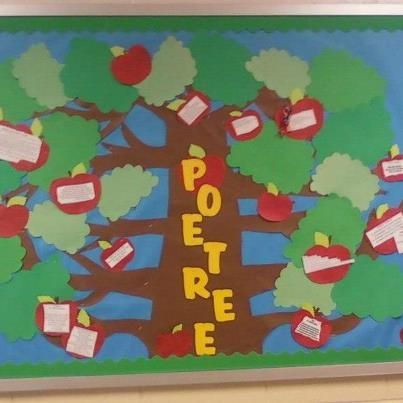
1 note
·
View note